Original air date: 16th January 1979
This first episode is about the story of first life. Below is an outline (timeline) of the episode showing all the main events (themes) and what they consist of – what appears on screen.

A graphical timeline of the episode
Being a pioneering work, this episode will always be regarded as a masterpiece in storytelling, keeping people glued to the screen while daring to talk about the start of life.
The episode starts by easing people into things with an introduction into Darwin’s ideas in the Galapagos, but the it plunges into the start of life through paleontology for almost half the episode. Only 35 minutes into the episode (final blue part) does it discuss creatures, sponges, jellyfish and corals, that most people are familiar with as animals.
How to read the colour codes and timeline
The colour codes in the outline have a particular meaning. Different colours indicate different subjects. Less distinct difference in colour indicates less distinct difference in subject: Attenborough’s talk about the Galapagos has more in common with the South American rain forest than it has with the fossil talk in the Grand Canyon. Those are very distinct subjects. Consequently different colours are used.
As the themes indicate the episode is split into 4 parts, the first of which is actually about Darwin, followed by the search for fossils. Some 15 seconds past the 19 minutes mark Attenborough starts talking about the “Life-on-Earth year” and then the start of life from molecules to complex cells. This is followed by more conventional zoology when he has reached the complexity of sponges.
The timeline is conspicuously split into two main colours identifying the main groups being discussed. To further identify the different parts of each group slightly varying hues of the same main colour are used.
The image above shows a graphical presentation of the timeline of the episode
A more detailed version of the same timeline is below

Selected material
The starting sequence
The very first few seconds of the episode are particularly noteworthy. Attenborough starts showing several different species. The exact selection of these species may be a coincidence but they form a logical whole as the remarks indicate, he starts showing a mother humpback whale with a calf. The next species is a flying fish (also marine but can temporarily leave its marine environment). Next animal appearing on screen is a tern hovering (we have mostly left the sea), followed by a bat (the only flying mammals). Next comes a frog leaping between tree branches.
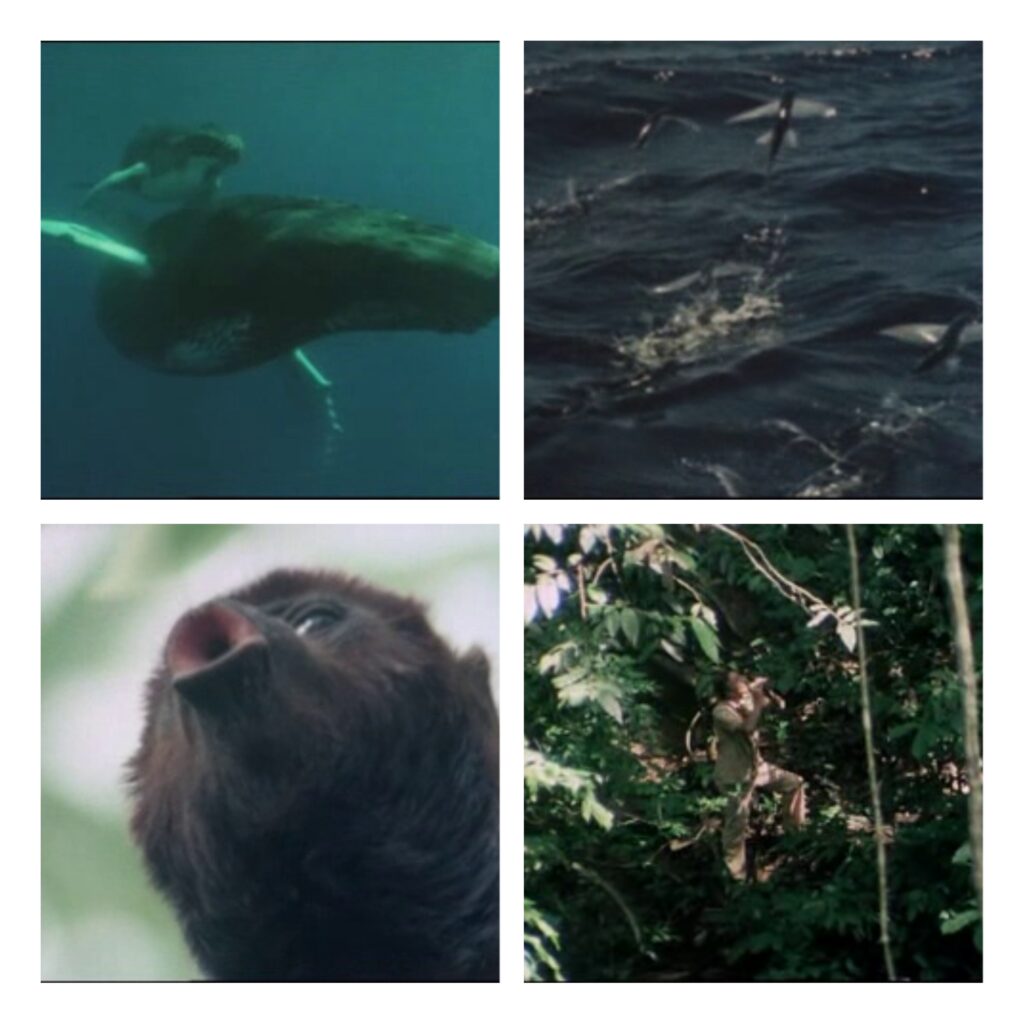
Watching those seconds almost feels like a brief glance through the evolution of life on the planet, yet this may also have been only an interesting string of coincidences. To make it look less likely this is followed by a howler monkey. While seeing the last few animals (a grasshopper and a hummingbird) the howler monkeys are heard. Then as a logical step the monkeys are left behind to go through the foliage of the trees down to the bottom where Attenborough lowers his binoculars as he starts talking to the camera. A very neat way to introduce him to the world*. Other people might say this was just one way of a series preview.
Darwin’s Galapagos revelation
Having started in the South American mainland the islands of Galapagos were the next logical destination, where Darwin realised that maybe animals were not fixed, but could change to suit the environment where they lived. He noticed that the cormorant for example looked like what he had seen on the mainland except this one had wings that were far too short. The iguanas on the mainland lived in trees but those on these islands dived for their food and had claws to enable them to stay stuck to the rocks. Tortoises had shells whose shape depended on how much water there was on the island, could it get enough water on the ground or did it have to stretch its neck upwards (like an elephant) for it?

The Grand Canyon
Another very interesting sequence involves the start of the trip to the Grand Canyon. Filming the sequence begins as they enter the canyon and is followed up by a sequence of presumably that same plane flying into the frame as it leaves. Following it for a few seconds the angle is dropped toward one brim of the canyon and the camera zooms in on a few tiny mobile dots that turn out to be the crew on mules (image top left). The film is zoomed even further until it is in front of Attenborough where a closer look is provided. Even though through brilliant editing it feels like a few seconds have passed this must have taken the cameraman many hours going along the ridge between the ravines passing one ravine after another because he was obviously very far away at first and the canyon is ridden with ravines.
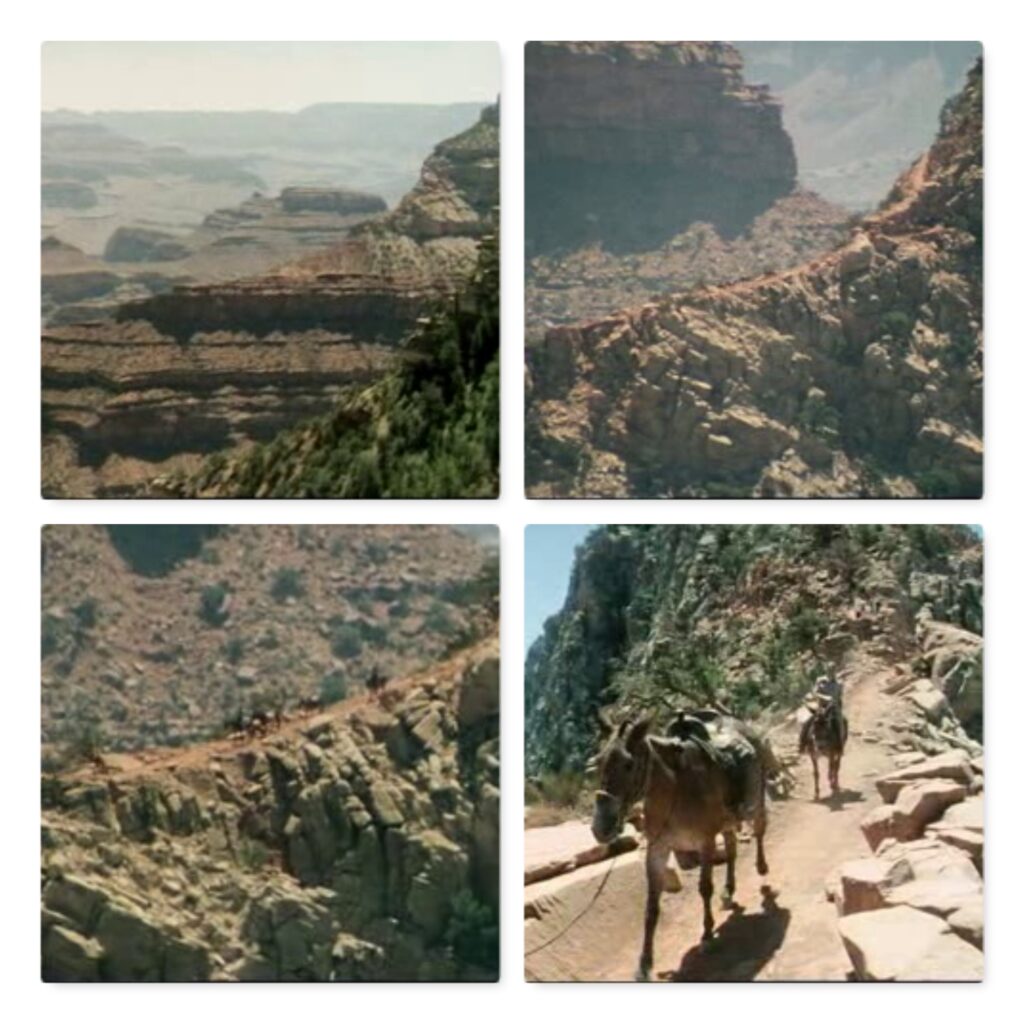
Nowadays this would have been accomplished with a drone that afterwards would have been flown straight back to the crew.
Fossil hunting
This trip, to the bottom of the canyon, was no sightseeing tour for the team. They were there to demonstrate that the oldest fossils in the canyon, very conveniently showing a cross-section of fossils of life on the planet, were those of some segmented worms. No older fossils could be found there. The question facing scientists was whether all older life had vanished or did it really start as complicated as worms? And then Attenborough said they realised they had been looking at the wrong rocks and in the wrong way. In the next frame Attenborough appears in Australia showing the right rocks and to cut a relatively short story even shorter they had to have the samples ultra thin to spot the tiny fragments of algae under a microscope, which was the right way to look at them.
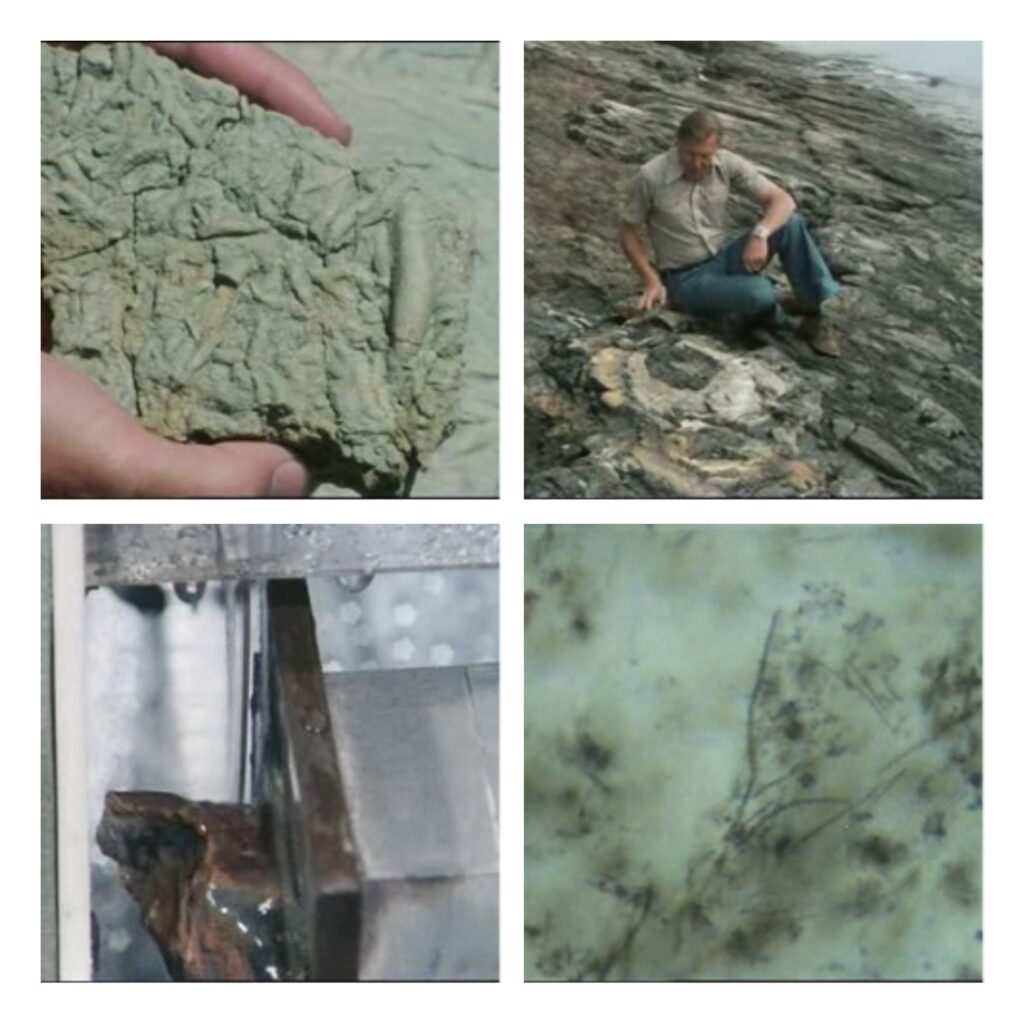
This is followed by a few minutes of the basics of molecular biology (unavoidably) which includes the first graphical presentation in the collection.
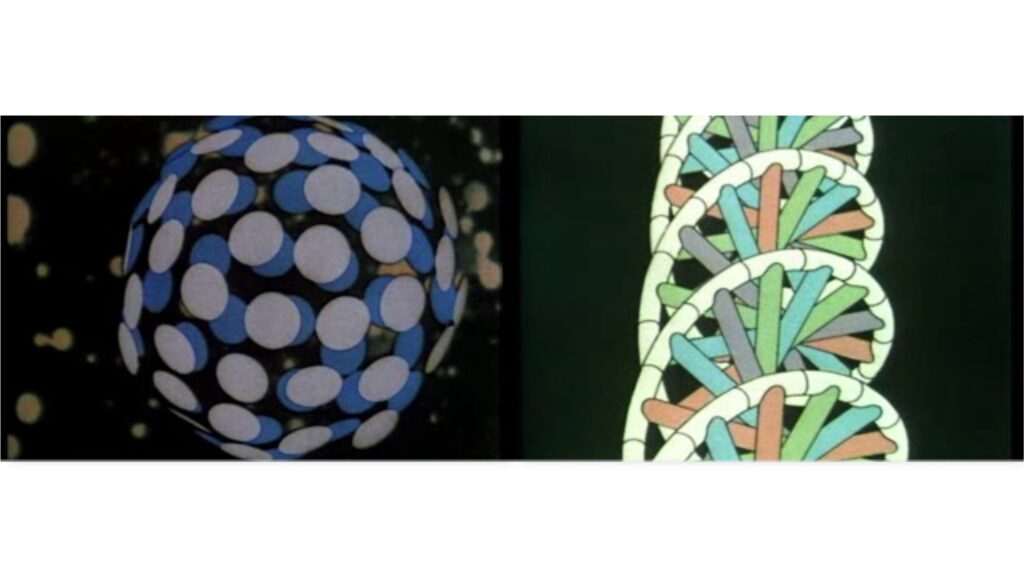
Slightly more conventional zoology
Sponges, architectural wonders
How did the sponge cells manage to collaborate to build this skeleton out of countless splinters of silica, the Venus’s flower basket ? It doesn’t seem to have any mouth, muscles or nervous system; it’s an evolutionary dead end.
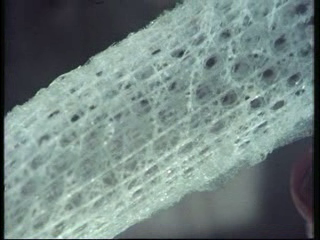
But jellyfish and their relatives are not ‘dead ends’ in evolution.
But there is no such problem with the next group, the final one in this first episode. A group called cnidarians contains animals like jellyfish and their relatives like sea pens. Some of their relatives form corals which are of two kinds, soft and hard.
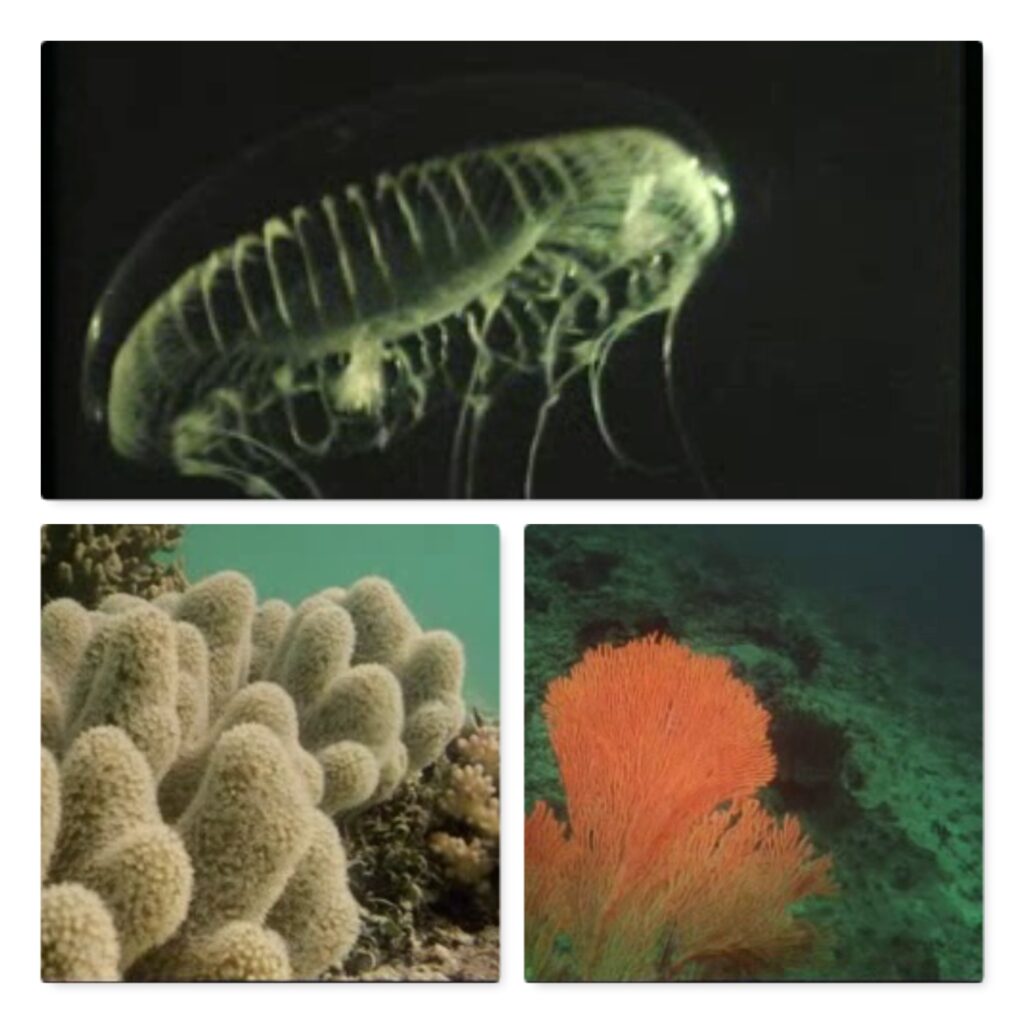
The hard ones form reefs like the Great Barrier Reef off Australia.
To keep everyone happy, amateurs and professionals alike, there is also a sequence included of the ‘birth’ of a medusa.
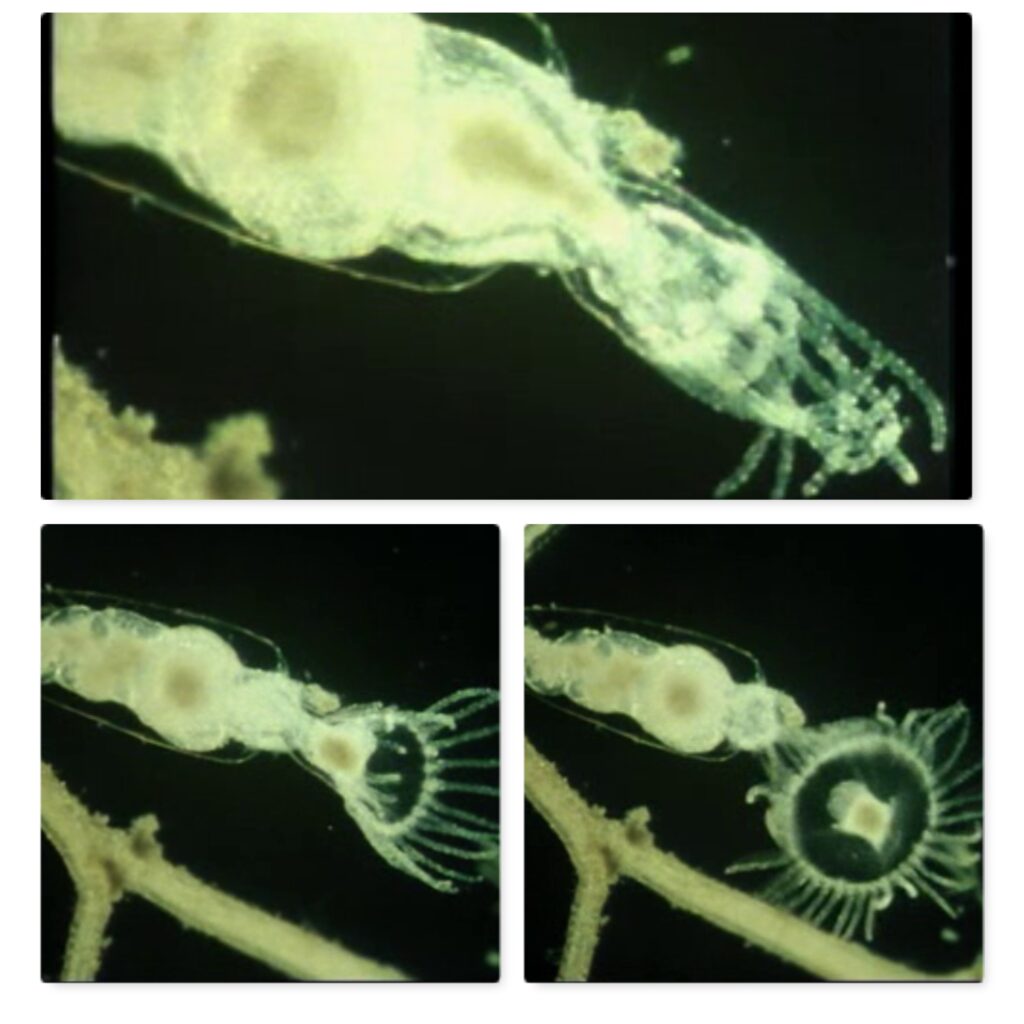
Filming locations
Watching the programme is even more enjoyable when filming locations (those given in the programme or other sources) are taken into account.
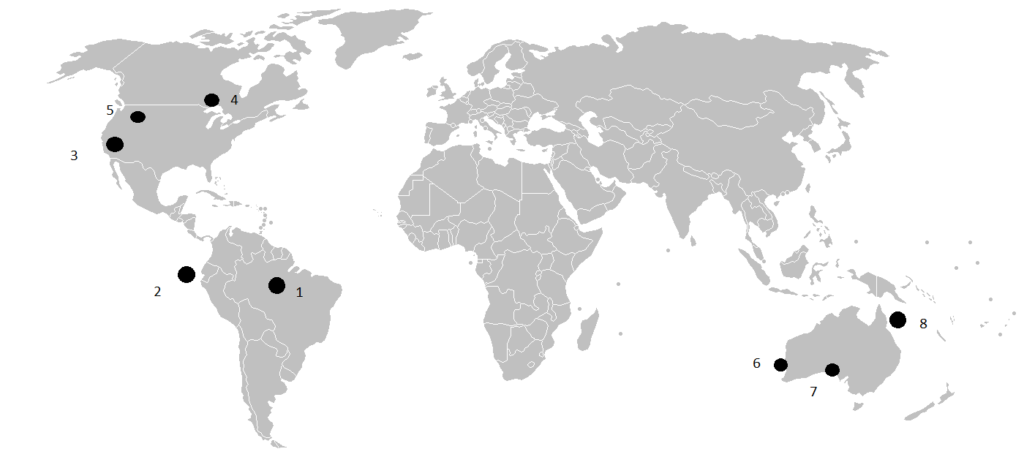
Filming locations are given in the same order the appear on film (numbers in brackets are approximate locations in episode):
1 – Howler monkeys in an unnamed forest in South America (2′)
2 – Galapagos Islands, introducing evolution (4′)
3 – Grand Canyon, fossil hunting (11′)
4 – Lake Superior, hunting for microscopic fossils (17′)
5 – Yellowstone National Park, introducing the start of life (24′)
6 – On the west coast of Australia (27′)
7 – Flinders Range, jellyfish fossils found (48′)
8 – The Great Barrier Reef (52′)
Resources
Origin of map: https://upload.wikimedia.org/wikipedia/commons/0/09/BlankMap-World-v2.png
Other sources of information: Christopher Parsons, True to Nature (1982). Pages 323-335.
The day of the 40th anniversary of this first episode it might be expected that BBC would celebrate it in some way, but it happened to be on a very big day as far as politics was concerned; Brexit grabbed all the headlines. Consequently this anniversary was kept out of shows where it might otherwise have been included like Breakfast on BBC One. BBC, however, did celebrate it to some extent by showing this exact episode following the interview with Michael Palin (Life on Air – 50 years in television) which was actually released in a disk box earlier and will be discussed separately. The rest of the series was made available on their i Player.
- Attenborough was at that time widely known in the UK but maybe not so much to the non-UK viewers.